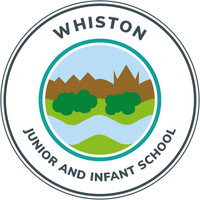Pupil Premium Policy Statement September 2025
At Whiston Junior and Infant School all members of staff and governors accept responsibility for all pupils, recognising that a number of pupils within the school population, some of whom are not eligible for pupil premium funding, may at any point during their school career require additional support and intervention. We are committed to meeting their pastoral, social and academic needs in a nurturing environment. As with every child in our care, a child who is in receipt of the pupil premium is valued, respected and entitled to develop to their full potential.
Background
The Pupil premium is allocated to children who are currently known to be eligible for free school meals in both mainstream and non-mainstream settings and children who have been looked after continuously for more than six months. It is also used for pupils who have been on the free school meals register but no longer qualify. Schools have the freedom to spend the pupil premium, which is additional to the underlying schools budget, in a way they think will best support the raising of attainment for the most vulnerable pupils.
In order to meet the above requirements, the Governing Body and staff of Whiston Junior and Infant School will ensure that provision is made which secures the teaching and learning opportunities that meet the needs of all pupils. As part of the additional provision made for pupils who belong to vulnerable groups, the Governors and staff of the school will ensure that the needs of pupils are adequately assessed and clarified at termly pupil progress meetings. In making provision for pupils, the Governors and staff recognise that not all pupils who are in receipt of the pupil premium will be disadvantaged. The Governors and staff also recognise that not all pupils who are disadvantaged qualify for the pupil premium. They therefore reserve the right to allocate the Pupil Premium funding to support any pupil or groups of pupils the school has legitimately identified as being disadvantaged.
Identification, implementation and development of provision
Academic intervention in addition to social, emotional and behavioural support are implemented through termly Pupil Progress Meetings. Analysis of tracking and progress is used as a vehicle to identify concerns and presenting issues and also as a measure of impact during the review process.
In addition, the school regularly considers current provision available in school and seeks to expand the range of support on offer; from within, through training or externally, by accessing professional support or expertise. The schools sees staff training in specific areas of expertise as a means to maximise value for money and ensure the longevity of pupil premium funded provision for future groups of pupils in school. For example, the training of teaching assistants in order to implement more effective interventions. All pupil premium funded intervention and provision is assessed and evaluated to measure impact. Subsequently activities are either maintained or modified for future implementation and any ineffective approaches are stopped.
Pupil Premium Strategy
The Pupil Premium is funding in addition to the school's budget. Schools are free to decide how to allocate this funding to best support the raising of attainment for the most vulnerable pupils.
A summary of the main barriers:
- Unmet personal, social, emotional and developmental needs, particularly for children on entry to EYFS
- Attendance at a lower rate than peers in school
- Emotional and social needs that impact on learning including mental health and wellbeing
- Speech and language development and the under development of vocabulary
- Pupils in receipt of pupil premium, including those who are adopted from care (AFC), who enter school with lower starting points and require individualised provision
Our strategy to remove these barriers are outlined in detail within the action plan and includes key provision for:
- ELSA on site working directly with pupils with increased SEMH Needs
- Additional involvement during transition and induction
- Strong leadership of the pupil premium strategy
- Targeted interventions that meet the pupils individual needs
- Increased teaching assistant hours for one to one and small group teaching of Oracy, Phonics and Early Reading
- Reduced costs for school uniform, visits, residentials and Breakfast Club to ensure all ‘disadvantaged’ pupils build cultural capital and a sense of belonging.
The action plan will be reviewed termly and the impact monitored through Pupil Progress Meetings
| Name | Format | ||
|---|---|---|---|
| Files | |||
| 2021 2024 Pupil Premium Strategy Statement Review 2022 23 .docx 1.pdf | |||
| 2021 2024 Pupil Premium Strategy Statement Reviewed Sept 24 .docx 1.pdf |

